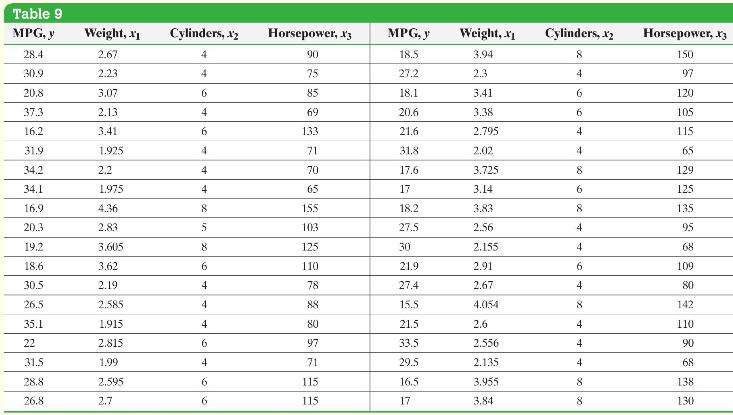The data in Table 9 represent the miles per gallon (MPG) along with potential explanatory variables weight
Question:
The data in Table 9 represent the miles per gallon (MPG) along with potential explanatory variables weight (in thousands of pounds), number of cylinders, and horsepower. Use a partial \(F\)-test to determine whether both cylinders and horsepower do not contribute significantly to the ability to predict miles per gallon. Use the \(\alpha=0.05\) level of significance.

Approach To perform a partial \(F\)-test, obtain the sum of squared errors from the full regression model with all three explanatory variables (weight, number of cylinders, and horsepower). Also obtain the sum of squared errors from the reduced model with only the explanatory variable weight. Then, compute the \(F\)-test statistic and compare it to the critical value to see whether the two explanatory variables, number of cylinders and horsepower, contribute significantly to explain the variability in miles per gallon.
Step by Step Answer:

Statistics Informed Decisions Using Data
ISBN: 9781292157115
5th Global Edition
Authors: Michael Sullivan





